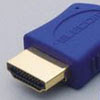
Some subset of photographers would like a compact camera with lots of higher-end features and manual controls. But a vastly larger quantity want their cameras to take photos with the correct focus, exposure, white balance and other factors without having to do more than press the shutter button.
Panasonic Lumix DMC-FZ18(Credit: Panasonic)
Which is why Panasonic's three newest cameras, the Lumix FX-33, FX-55 and FZ18 are notable. For one thing, Panasonic is catching up with competitors such as Fujifilm and Canon by introducing face detection, which lets the camera guess more intelligently about what the photographer is trying to shoot and adjust settings accordingly. But more novel is what Panasonic calls Intelligent Scene Selector.
Intelligent Scene Selector, if switched on, replaces a common set of broad parameters that otherwise must be manually activated. It lets the camera take its best guess about whether the scene is one of five modes: portrait, landscape scenery, macro close-up, night scenery and night portrait, said Alex Fried, Panasonic's national marketing manager for imaging in North America. And when the camera is in portrait modes, it uses the face-detection technology for further refinement.
"All that takes place without touching a button," Fried said. "Consumers don't utilize scene modes to their fullest capability. A lot don't go that deep into the manual or into the menus."
All three of the new cameras feature the face detection and automatic scene selection as well as two earlier technologies, Panasonic's Mega OIS, which shifts the image sensor to counteract camera shake, and Intelligent ISO, which increases the camera's sensitivity to try to deal with moving subjects. Boosting ISO lets the camera use a shorter exposure to freeze action better, but it produces more off-color speckles called image noise.
Collectively, Panasonic calls the four features Intelligent Auto Mode. I suppose camera makers can be excused for attaching official names to their features, and now metafeatures, in the effort to distinguish their models from the herd. But I fear it causes brand exhaustion among camera buyers.
As my comrade Will Greenwald noted on our Crave blog, the three new cameras are 8-megapixel models due in September and sporting zoom ranges that begin at a nice 28mm wide angle. The FX33 and FX55 are smaller, with 3.6x zoom lenses and LCDs measuring 2.5 inches and 3 inches, respectively. The FZ18 has a huge 18x zoom range, a notch longer than the predecessor FZ8, which began at 35mm and spanned a 12x zoom range. And for control freaks, it offers manual control and raw image support, Fried said. Prices, in ascending order, are about $300, $350 and $400.
 Microsoft is expected to lower the price of its Xbox 360 game console by $50 next month.
Microsoft is expected to lower the price of its Xbox 360 game console by $50 next month. 


